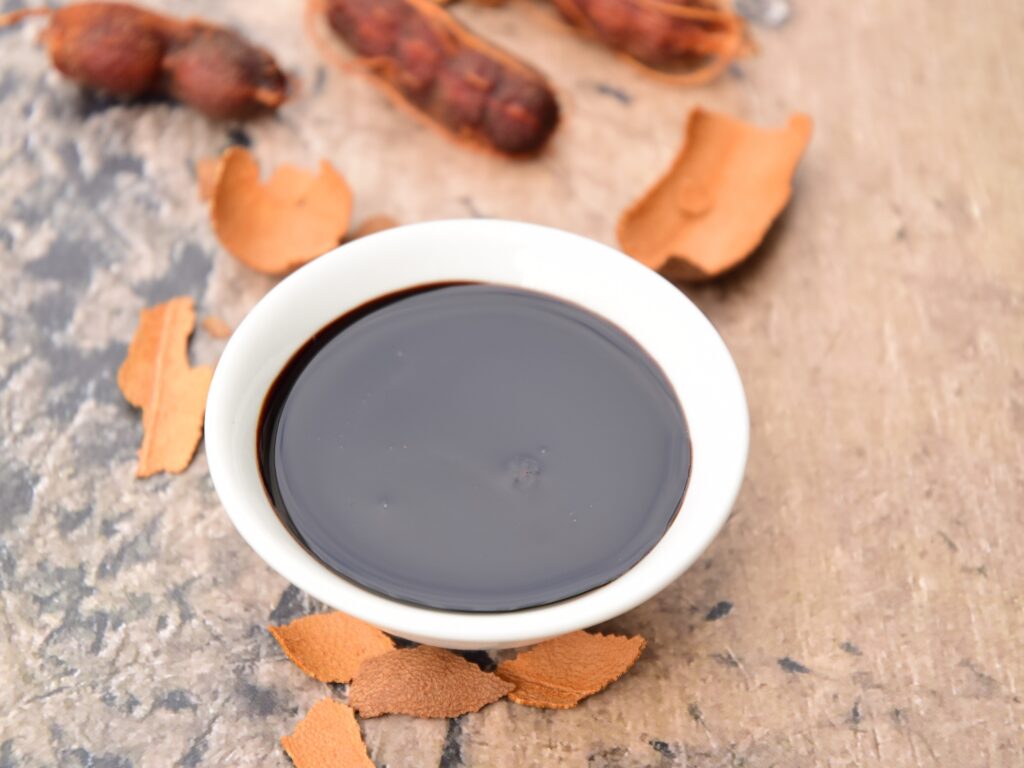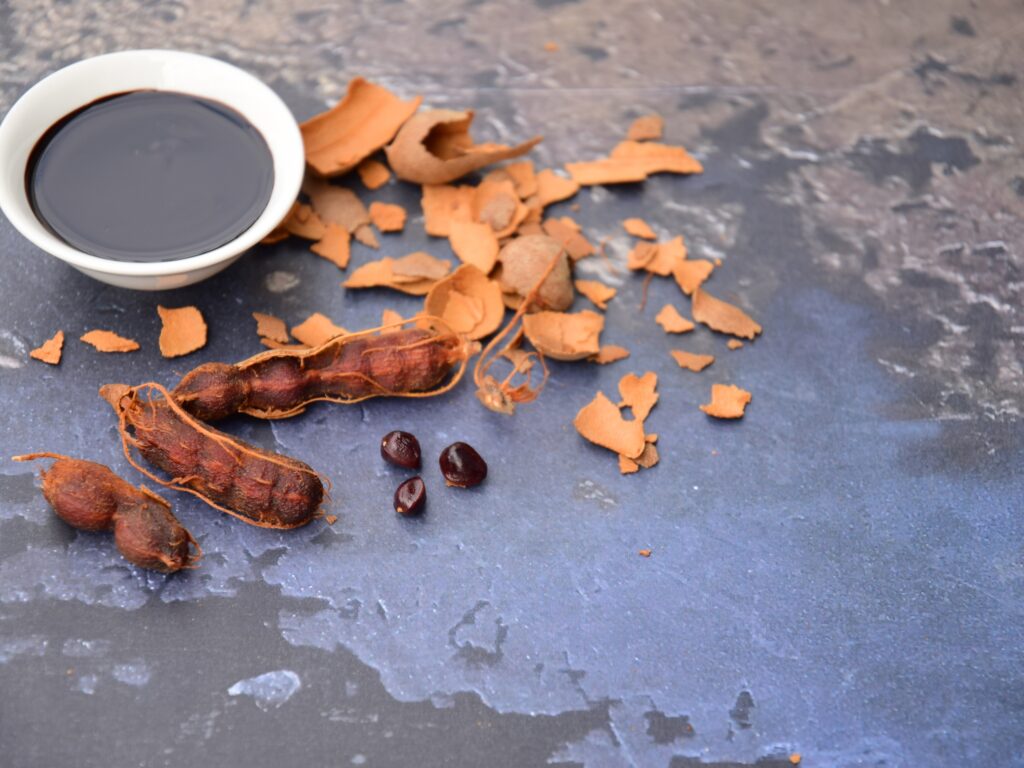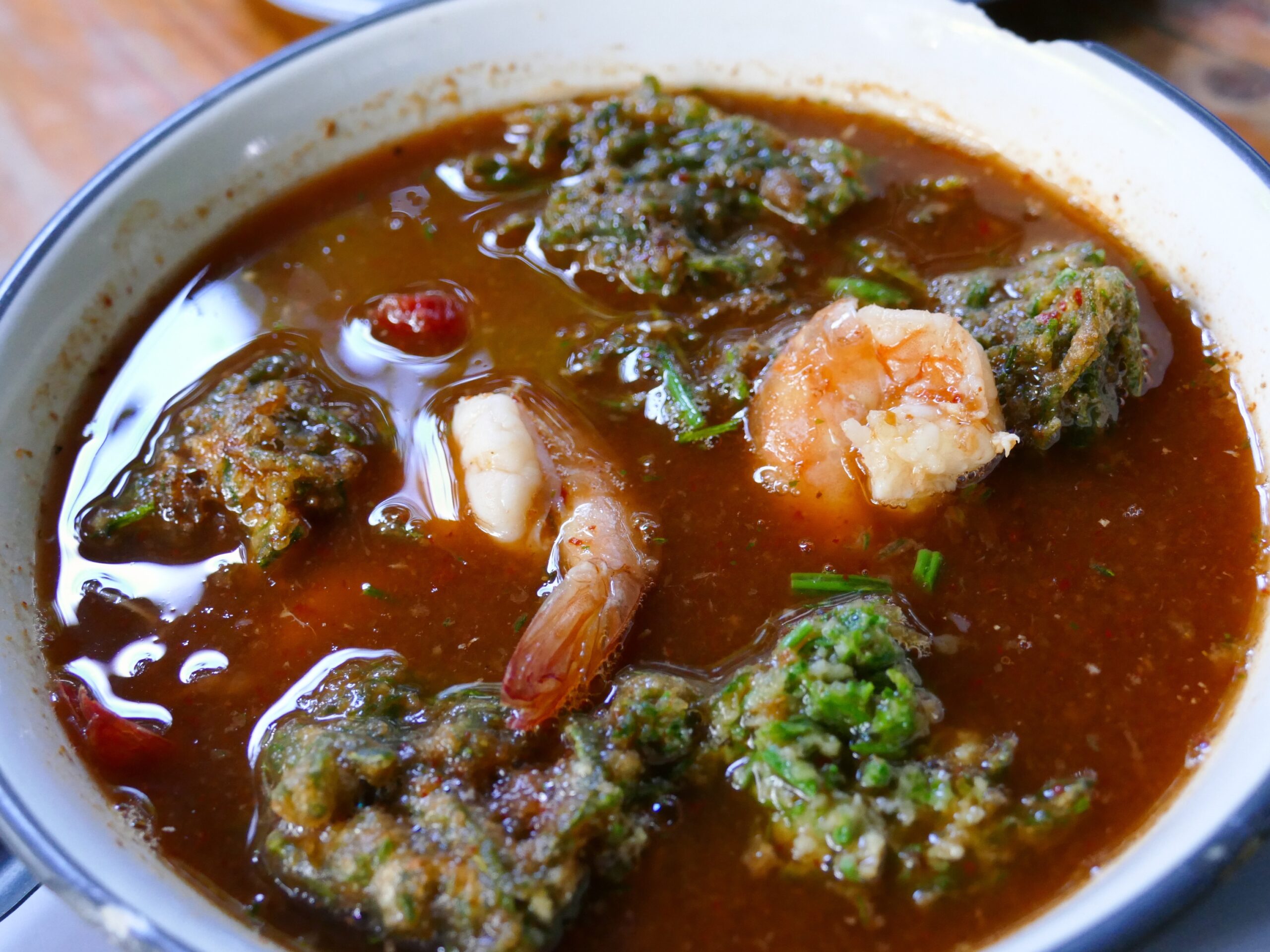If you don’t have tamarind paste on hand or you can’t find it at your local grocery store, there are several substitutes that you can use in your recipes. Here are some common tamarind paste substitutes:
- Lemon or Lime Juice: Lemon or lime juice can be used as a substitute for tamarind paste in some recipes. Use about 1 tablespoon of lemon or lime juice for every 1 teaspoon of tamarind paste.
- Worcestershire Sauce: Worcestershire sauce is a good substitute for tamarind paste in recipes that require a sour and slightly sweet flavor. Use about 1 tablespoon of Worcestershire sauce for every 1 teaspoon of tamarind paste.
- Rice Vinegar: Rice vinegar can be used as a substitute for tamarind paste in some recipes, especially in Asian cuisine. Use about 1 tablespoon of rice vinegar for every 1 teaspoon of tamarind paste.
- Pomegranate Molasses: Pomegranate molasses is a good substitute for tamarind paste in recipes that require a sour and slightly sweet flavor. Use about 1 tablespoon of pomegranate molasses for every 1 teaspoon of tamarind paste.
- Vinegar: White or apple cider vinegar can be used as a substitute for tamarind paste in some recipes. Use about 1 tablespoon of vinegar for every 1 teaspoon of tamarind paste.
It’s important to keep in mind that these substitutes may alter the flavor of the dish slightly, so adjust the amounts as necessary and taste as you go. Additionally, tamarind paste has a unique texture, so you may need to adjust the liquid content of your recipe to compensate for the lack of paste.

The best tamarind paste
There are many brands of tamarind paste available in the market, and the best one for you may depend on your personal preferences and the specific recipe you are making. Here are some popular and well-reviewed brands of tamarind paste:
- Tamicon Tamarind Paste: This brand is widely available and popular among home cooks. It is made from high-quality tamarind and has a tangy, slightly sweet flavor.
- Thai Kitchen Tamarind Paste: This brand is commonly used in Thai cuisine and has a strong, sour flavor. It is made from tamarind pulp and water, with no added sugar or preservatives.
- Jiva Organics Tamarind Paste: This brand is made from organic tamarind and has a rich, tart flavor. It is gluten-free, vegan, and free from any additives or preservatives.
- Swad Tamarind Concentrate: This brand is made from tamarind pulp and water and has a bold, tangy flavor. It is widely used in Indian cuisine and is free from any added colors or preservatives.
- Roland Tamarind Concentrate: This brand is made from tamarind pulp and water and has a sour, tangy flavor. It is widely used in Southeast Asian cuisine and has no added colors or preservatives.
It’s important to note that tamarind paste can vary in consistency and intensity of flavor depending on the brand and how it was made. You may need to adjust the amount of tamarind paste you use in your recipe based on the specific brand you choose and your personal taste preferences.
Thai tamarind paste
Thai tamarind paste is a popular ingredient in Thai cuisine, especially in dishes like pad Thai, tom yum soup, and many curry recipes. The most commonly used type of tamarind in Thailand is the sour tamarind variety, which is used to make tamarind paste.
There are several brands of Thai tamarind paste available in the market, including:
- Mae Ploy Tamarind Paste: This is a popular brand of Thai tamarind paste that is widely available in Asian supermarkets. It is made from 100% tamarind and has a strong, sour flavor.
- Cock Brand Tamarind Paste: Another well-known brand of Thai tamarind paste, Cock Brand is made from 100% tamarind and has a tangy, tart flavor.
- Por Kwan Tamarind Paste: This brand of tamarind paste is commonly used in Thai and Southeast Asian cooking and has a slightly sweeter flavor compared to other brands. It is made from tamarind pulp, sugar, and salt.
When using Thai tamarind paste, it’s important to note that the intensity of the flavor can vary depending on the brand and how the paste was made. It’s best to start with a small amount of paste and adjust to taste as needed. Additionally, some recipes may call for tamarind concentrate instead of tamarind paste, which is a more concentrated form of tamarind. In this case, you may need to adjust the amount of concentrate used in the recipe accordingly.
tamarind paste Tesco
Tesco does sell tamarind paste, and it can usually be found in the Asian food section of the store. The exact location may vary depending on the specific Tesco store, but it is usually near other ingredients used in Asian cooking, such as curry pastes, coconut milk, and rice noodles.
To find tamarind paste in Tesco, you can check the international foods aisle or the aisle dedicated to Asian cuisine. Alternatively, you can search for it on the Tesco website and have it delivered to your home or opt for click-and-collect.
It’s important to note that the availability of tamarind paste at Tesco may vary depending on the location and season. If you’re unable to find it at your local Tesco, you may want to check other supermarkets or try purchasing it online.

tamarind paste Safeway
Safeway stores in the United States generally carry tamarind paste, and it can usually be found in the international foods aisle or the aisle dedicated to Asian cuisine. However, the availability of tamarind paste at Safeway stores may vary depending on the location and season.
To find tamarind paste at Safeway, you can check the international foods aisle or the aisle dedicated to Asian cuisine. You can also search for it on the Safeway website and have it delivered to your home or opt for curbside pickup.
If you’re unable to find tamarind paste at your local Safeway, you may want to check other supermarkets or try purchasing it online from retailers such as Amazon or specialty Asian food stores.
tamarind paste amazon
The tamarind paste is available on Amazon, and there are many different brands and varieties to choose from. When searching for tamarind paste on Amazon, you can use keywords such as “tamarind paste”, “tamarind concentrate”, or “tamarind pulp”.
You can find tamarind paste in different sizes and forms on Amazon, including jars, pouches, and blocks. Some of the popular brands of tamarind paste available on Amazon include Tamicon, Swad, and Thai Kitchen.
When purchasing tamarind paste on Amazon, it’s important to read the product description and reviews carefully to ensure that you’re getting a high-quality product. Additionally, check the shipping options and estimated delivery times to ensure that you’ll receive the tamarind paste in time for your recipe or cooking needs.
tamarind paste taste
Tamarind paste has a unique sweet and sour flavor with a slightly tangy and fruity taste. It is made from the pulp of the tamarind fruit, which is native to Africa and Asia and is used widely in many cuisines around the world.
The flavor of tamarind paste can be described as a combination of sweet, sour, and tart, with a slightly acidic and tangy taste. The sweetness of the tamarind paste comes from its natural sugars, while the sourness comes from the tamarind’s high content of tartaric acid. The pulp of the tamarind fruit also contains other flavor compounds, such as volatile oils, which give it a distinctive aroma.
Tamarind paste is a common ingredient in many Southeast Asian and Indian dishes, and it is often used as a souring agent in curries, soups, and stews. It can also be used as a marinade for meat or fish, as a condiment for dipping sauces, or as a flavoring agent for chutneys and jams.
Overall, tamarind paste has a unique and complex flavor profile that can add a delicious tanginess and depth to many different types of dishes.
tamarind paste substitute Worcestershire sauce
While tamarind paste and Worcestershire sauce have a similar tangy flavor, they are not perfect substitutes for each other as they have different consistencies and flavor profiles. However, you can use a combination of other ingredients to create a substitute that can work in some recipes.
Here’s a recipe for a tamarind paste substitute using Worcestershire sauce:
Ingredients:
- 1/4 cup Worcestershire sauce
- 1 tablespoon lemon juice
- 1 tablespoon brown sugar
- 1/2 teaspoon ground cumin
Instructions:
- In a small bowl, mix together Worcestershire sauce, lemon juice, brown sugar, and cumin.
- Stir the mixture until the sugar has completely dissolved and all ingredients are well combined.
- Taste and adjust seasoning as needed.
- Use the substitute in place of tamarind paste in your recipe.
Note: This substitute is not an exact replacement for tamarind paste and may alter the overall flavor of your dish. Use it as a last resort when you don’t have tamarind paste on hand.
tamarind paste substitute pad thai
Tamarind paste is a key ingredient in Pad Thai sauce, but if you don’t have it on hand, you can use one of the following substitutes:
- Lime juice: Pad Thai traditionally contains lime juice, so using lime juice in place of tamarind paste can work well. Start with 1-2 tablespoons of lime juice and adjust to taste.
- Rice vinegar: Rice vinegar has a mild sweetness and acidity that can work well as a substitute for tamarind paste. Use 1-2 tablespoons in place of tamarind paste.
- Worcestershire sauce: While not traditional, Worcestershire sauce can add a tangy flavor to Pad Thai and can be used in a pinch. Use 1-2 tablespoons in place of tamarind paste.
- Fish sauce: Fish sauce is a traditional ingredient in Pad Thai, and it can add a salty and slightly sour flavor that can replace tamarind paste. Use 1-2 tablespoons of fish sauce in place of tamarind paste.
It’s important to note that while these substitutes can work well, they will alter the flavor of the dish. Experiment with small amounts of the substitute and adjust to taste to ensure the best result.
tamarind paste substitute Worcestershire sauce
Tamarind is a common ingredient in many curry recipes, and it provides a tangy and slightly sweet flavor that can be difficult to replicate. However, there are a few substitutes that you can use to achieve a similar flavor profile in your curry:
- Lemon or Lime Juice: A small amount of lemon or lime juice can be added to the curry to provide acidity and tanginess. Start with a tablespoon or two and adjust to taste.
- Vinegar: Similar to lemon or lime juice, a small amount of vinegar can be used to add acidity to the curry. White vinegar, apple cider vinegar, or rice vinegar are good options.
- Mango Powder: Also known as amchur, mango powder is made from dried unripe mangoes and has a tangy flavor that can replace tamarind. Use a teaspoon or two in your curry.
- Pomegranate Molasses: Made from pomegranate juice, this syrup has a sweet and tangy flavor that can work well in curries. Use about a tablespoon in your recipe.
- Tomatoes: If you’re making a tomato-based curry, you can use chopped or pureed tomatoes to add acidity and sweetness.
Remember to start with a small amount of the substitute and adjust to taste. While none of these options will replicate the exact flavor of tamarind, they can provide a similar tangy and sweet taste that can enhance the overall flavor of your curry.

